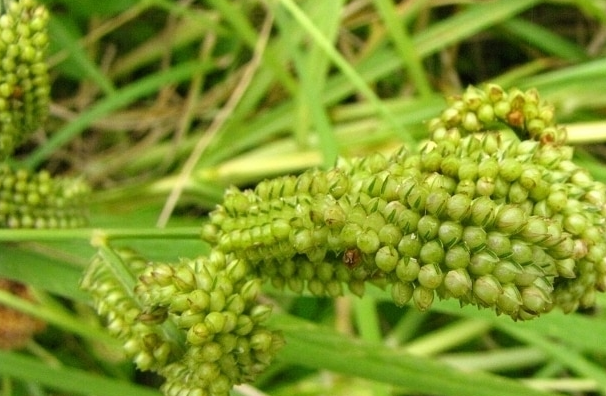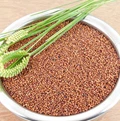
'Ragi' also known as Finger Millet, is a robust, popular food and marvellous grain crop in India. It is called dry land crops, mostly cultivated by the people of Andhra Pradesh, Karnataka and Tamil Nadu & Kerala, both tropical and sub-tropic regions.
In addition, ragi provides many health benefits if consumed on regular basis.
Enhanced Finger Millet Varieties in India
VLMandua-204,VLMandua-146,VLMandua-314,VLMandua-315,H-22,K 1,Hullubele,Karegidda,Gidda ,Jasarilambi ,Madayyanagiri-1 ,Madayyanagiri-2, Dodda, Jadesanga and Jenumudda. VLMandua-124,VL Mandua-149, CO-9, CO-13, CO (Ra)-14 and TRY-1,Paiyur-1,Paiyur-2, VL Mandua-101.
Climatic requirements for ragi cultivation
For best growth, the finger millet cultivation requires daytime temperatures of 30 °C to 34 °C and night temperatures of 22°C to 25 °C. Optimum rainfall is around 100 cm per year.
Soil requirements
A broad array of soils, from rich loams to poor low uplands with good organic matter, may be used to cultivate finger millet. However, porous/light red loam/sandy loam soils are ideal for agriculture with strong internal drainage. In addition, black soils with good drainage can be considered. Finger millet plants are best planted in 4.5 to 8.0 pH soils. Heavy terrestrial soils should be prevented with inadequate water drainage.
Land preparation
For both rainfed and irrigated conditions, the land preparation technique is different. The primary field should be ploughed 2 or 3 times deeply for rainfed plantation (crop with 80 cm rainfall) in order to maintain the moisture content in the soil. If the same is an irrigated one, the field must be ploughed till the fine tilth upon monsoon arrival.
Sowing Methods and Propagation
Seeds are mainly used for propagation in finger millet agriculture. In rainfed cultivation the following sowing methods are employed:
- Broadcasting: The Finger Millet seeds are immediately sown in the field by broadcasting, which is the most common method used.
- Line Sowing: Finger millet seeds are planted in lines, which is a better approach than broadcasting. Line spacing should be 22 cm to 30 cm between lines and 8 cm to 10 cm inside lines when using this method. Finger millet seeds should be put in the soil around 3 cm deep.
- Drilling in rows: Drilling is used to sow seeds. In line sowing, seed cum fertiliser drill planting is highly advantageous.
- Seedling Transplantation: The procedure of raising seedlings in nursery beds and transplanting them to the main field is known as transplanting. During transplanting, the beds must be levelled and watered. Seedlings should be transferred into the field when they are four weeks old. Seedlings should be transplanted at 25 × 10 cm in the early Rabi and Kharif seasons, and at 30 cm x 10 cm in the late Kharif season. Planting should take place at a depth of 3 cm in the soil.
Seed Rate
In Finger Millet Farming, the seed rate is around 10 to 15 kg per hectare.

Manures and Fertilisers
Apply 13 metric tonnes of farmyard manure (FMY) per hectare into the soil. The use of fertilisers such as NPK is determined by the region and soil. Both irrigated and rainfed situations have varied requirements in different states. NPK should be used in different areas depending on the soil fertility.
Intercropping
Intercropping always yields positive results. Some of the best combinations are Finger Millet + maize, Finger Millet + field bean or Fodder sorghum, Finger Millet + Pigeon pea, Finger Millet + black gram or green gram or Finger Millet + mustard.
Irrigation
In terms of Red soil: 1st irrigation should be done immediately after sowing, 2nd irrigation should be done on the 3rd day after sowing, 3rd sowing after 7th day after sowing, 4th irrigation should be done on the 12th day after sowing and 5th irrigation should be done on the 17th day.
In terms of Heavy soil: 1st irrigation should be done immediately after sowing, 2nd irrigation should be done on the 4th day after sowing, 3rd sowing after 9th day after sowing and 4th irrigation should be done on the 16th day after sowing.
Weed Control
Weedicides can be administered in the field or hand weeding can be done. On the 9th and 19th days after transplanting the seedlings, hand weed should be applied twice. After 4 weeks of seeding, inter cultivation and weeding should be done using a hand hoe. Two or three hoeings should suffice. Because Finger Millet is a densely seeded crop, thinning should be done two weeks after seeding. Hand thinning is commonly used.
Pests and Diseases
Pink stem borer, Leaf folder, Earhead bug, Earhead bug, Aphids, White stem borer, Root aphid, Finger Millet leaf hopper, Cutworm, Yellow aphid, and Grasshopper are the most common pests encountered in Finger Millet cultivation. The principal diseases in the Finger Millet crop are blast and mosaic. Contact your local agriculture department for symptoms and control procedures for these pests and diseases.
Harvesting
In 4 to 5 months, the harvest of finger millet will be ready and mature. In 2 to 3 months, finger millet begins to flower. This crop should be cut above ground level and dried for 2 to 3 days in the sun. Separating the seeds from the plants can be done with bullocks or sticks.
Yield
Yield is always influenced by crop management practises and the cultivar used. If Finger Millet is grown as a rainfed crop, an average yield of 12 to 15 quintals/ha can be predicted. Irrigated crops can yield 40 to 45 quintals per hectare.











